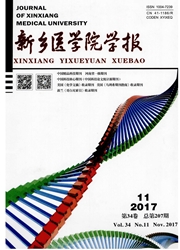

 中文摘要:
中文摘要:
目的采用不同上升时间、幅度和3种不同上升函数的纯音包络波对小鼠下丘神经元给予刺激,探讨神经元第一动作电位发放反应的声刺激参数。方法在4~6周BALB/c小鼠下丘神经元上,采用在体细胞外记录方法,同时改变声刺激的3个实验控制参数:上升函数、上升时间(分别设为2 ms、5 ms、10 ms、20 ms、50 ms、100 ms)和稳态声压(阈值到90 dB),并记录对应于特定上升函数、上升时间和稳态声压时的第一动作电位发放延时。然后以特定的数理模型对单单位神经元数据进行分析处理,以确定声刺激的特定参数和神经元对该参数的反应规律。结果共记录到54个神经元反应。发现神经元第一发放延时与声音刺激的包络波瞬时声强存在着良好的单指数衰减关系。结论声音包络波的瞬时声强决定了小鼠下丘神经元第一发放延时。
 英文摘要:
英文摘要:
Objective To explore the sound stimulus parameter of the first spike latency of mouse auditory neurons, by means of modified envelope sound in terms of rise time, sound pressure and rise functions. Methods Extraceltular recording technique was employed on central nuclei of inferior colliculus of 4 to 6 weeks BALB/c mouse. The three experimentally controlled parameters of sound stimulus were changed simultaneously ,rise time set as 2,5,10,20,50,100 ms separately ,sound pressure upmost to 90 dB. Then the first spike latency of auditory neurons were recorded through our softwares( BrainWare of TDT). The single-unit data was processed by our unique mathematical method. Results A total of 54 responses from neurons were gotten. And there was an obvious relationship of single exponential decay between first spike latency of neurons and instantaneous peak pressure of onset of sound envelope. Conclusion First spike latency is determined by instantaneous sound peak pressure in the mouse inferior colliculus neurons.
 同期刊论文项目
同期刊论文项目
 同项目期刊论文
同项目期刊论文
 B ilateral cortical interaction: modulation of delay-tuned neurons in the contralateral auditory cor
B ilateral cortical interaction: modulation of delay-tuned neurons in the contralateral auditory cor First spike latency and spike count as functions of tone amplitude and frequency in the inferior col
First spike latency and spike count as functions of tone amplitude and frequency in the inferior col Recovery cycle of neurons in the inferior colliculus of the FM bat determined with varied pulse-echo
Recovery cycle of neurons in the inferior colliculus of the FM bat determined with varied pulse-echo 期刊信息
期刊信息
